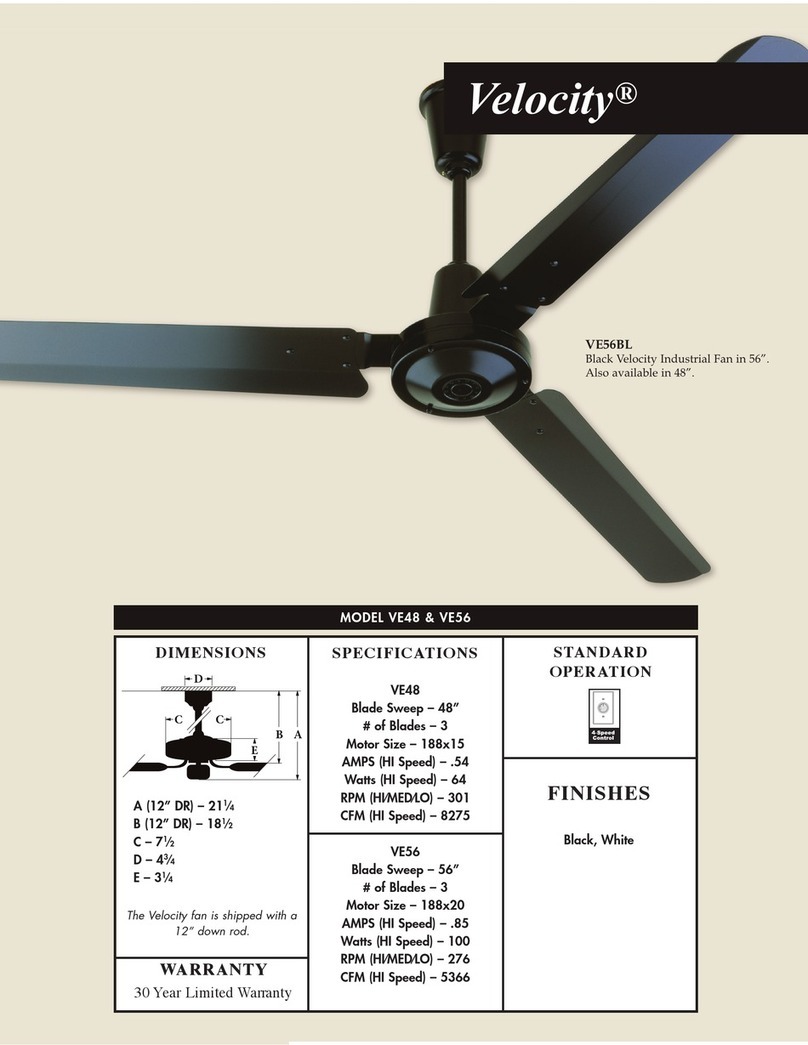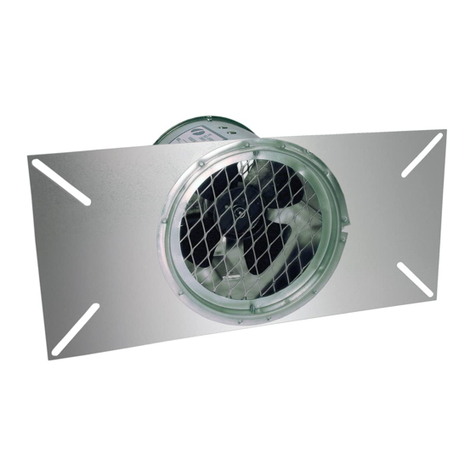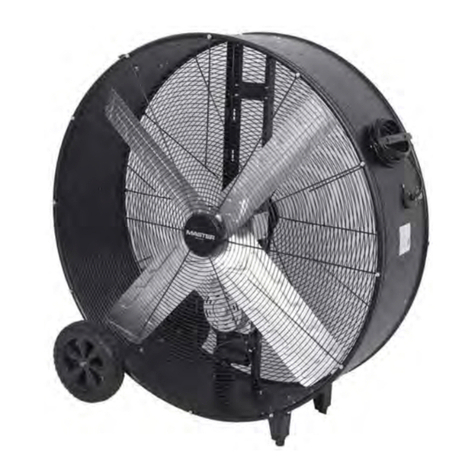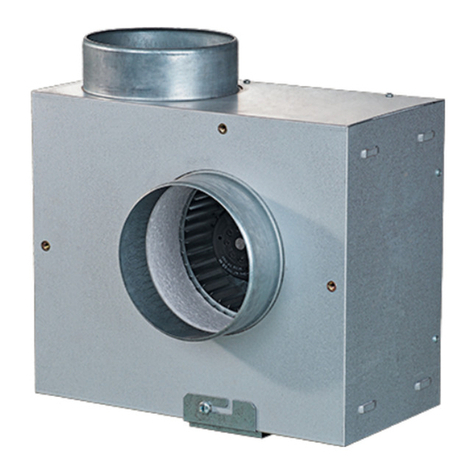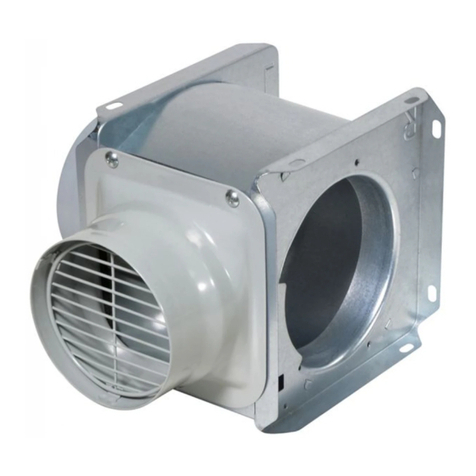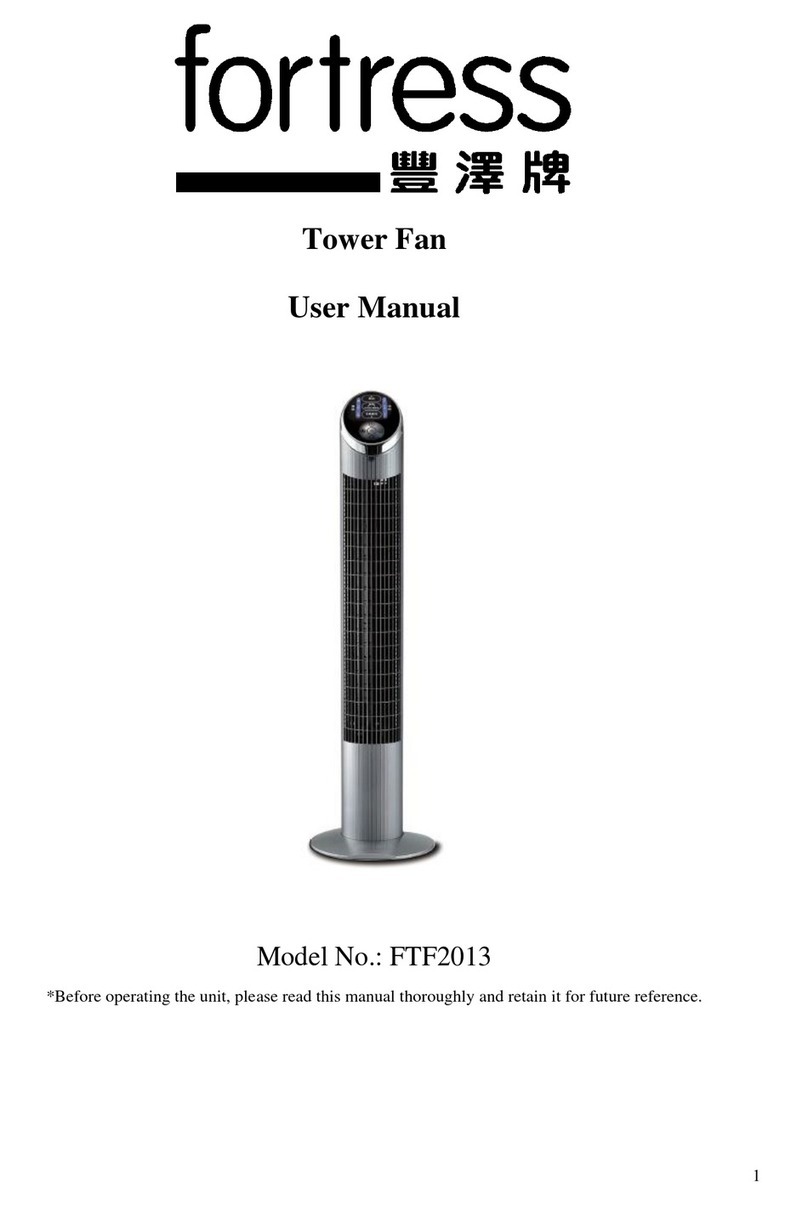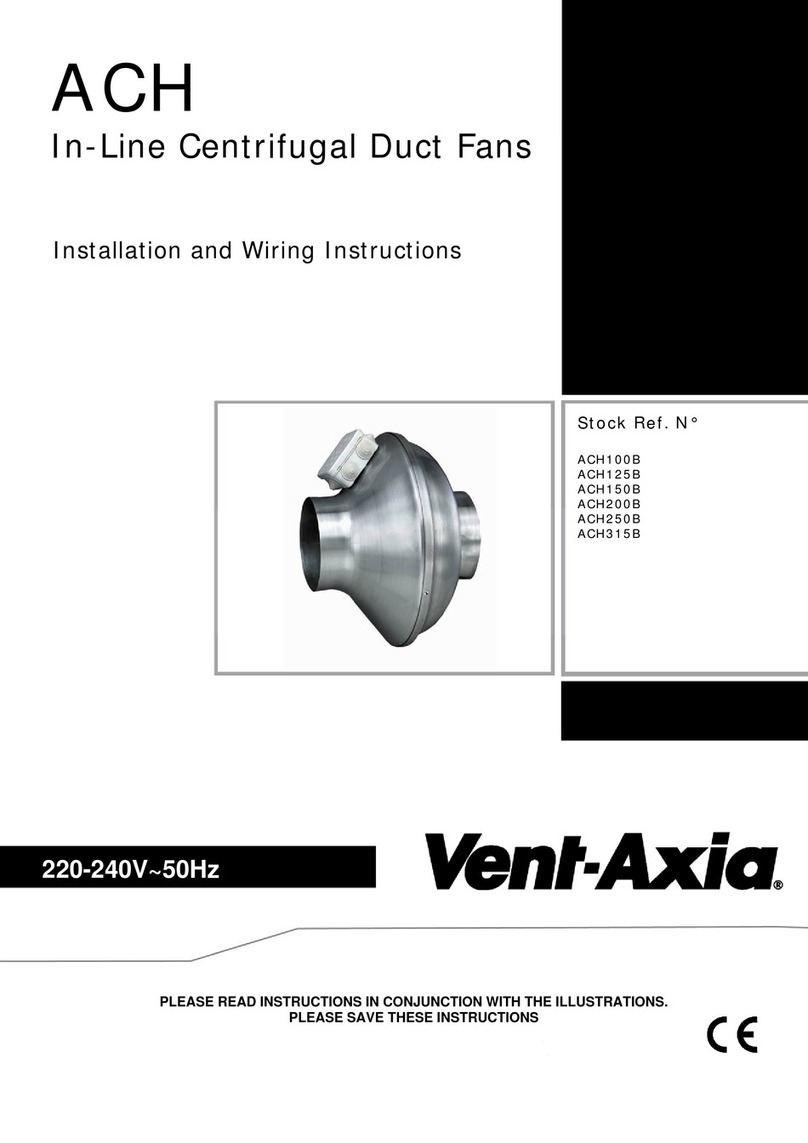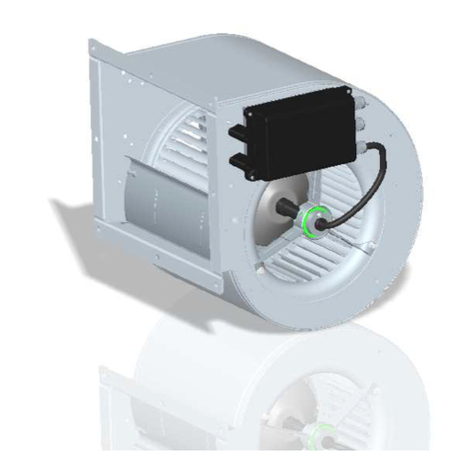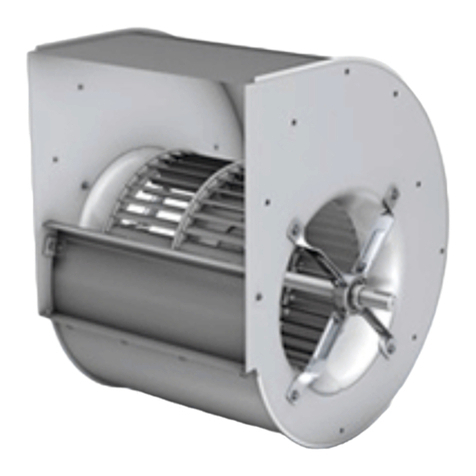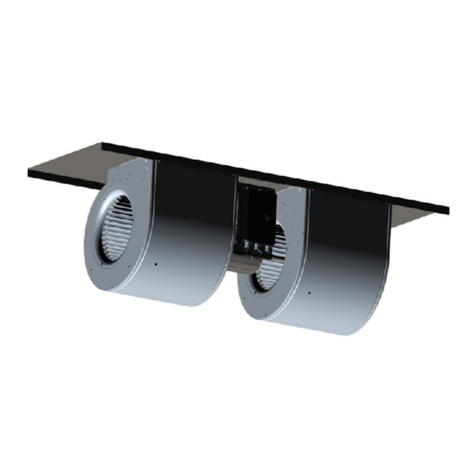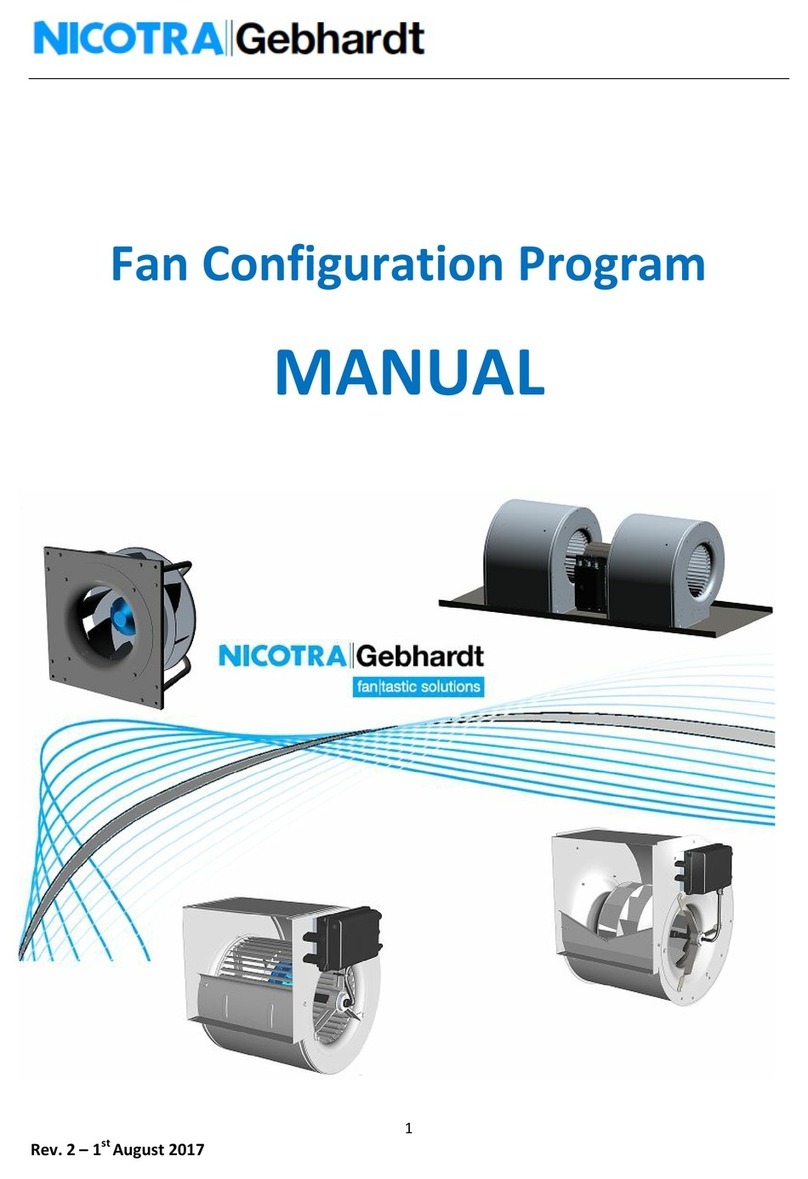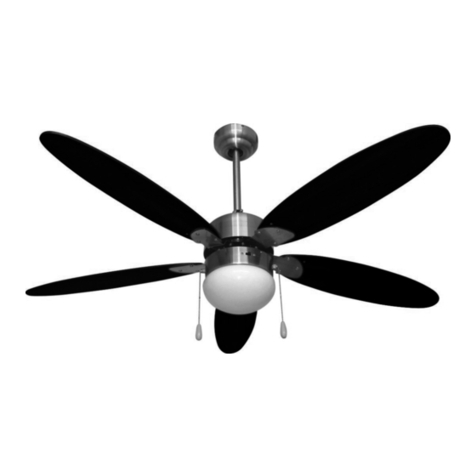
Montageanleitung DE
MA-CFB_BEARING 4.4 – 02/2020 5
Pendellager
mit Spannhülse und Steh-Gussgehäuse
RZR 13-0400/-1600 (IWN)
RER 13-0200/-1600 (IWN)
RER 17-0200/-1000 (IWN)
(Seite 1 von 3)
Hinweise
Die eingebauten Pendellager mit Spannhülse sind für eine nominelle Lebensdauer (L10h nach DIN ISO 281-1) von 20.000 bzw.
40.000 Betriebsstunden ausgelegt. Die Wartung erfolgt gemäß der Betriebsanleitung RZR / RER, Kapitel Instandhaltung /
Wartung. Sollte ein Lagerwechsel erforderlich werden, sind die Sicherheitsvorschriften der Betriebsanleitung RZR /
RER zwingend einzuhalten!
Allgemeines
Um die Ventilatorlagerungen zugänglich zu machen, sind unter Einhaltung der Sicherheits- und Unfallverhütungsvorschriften
und der örtlichen und baulichen Gegebenheiten div. Demontage-Arbeiten auszuführen (z.B. Netztrennung, Riementrieb,
Schutz- und Überwachungs-Einrichtungen, Kanäle).
Lager-Demontage
1. Lagergehäusedeckel (1) demontieren
2. Sicherungsblech der Hülsenmutter (2) aufbiegen und Hülsenmutter soweit lösen (ca. 2-3 Umdrehungen), dass die
Stirnfläche mit der Spannhülse bündig ist.
3. Schlagkappe oder Rohrstück gegen die Hülsenmutter ansetzen und mit Prellschlägen die Spannhülse zurück schlagen. Bei
axial und radial entlasteten Lagern kann auch der Innenring von der Spannhülse geschlagen werden.
4. Befestigungsschrauben am Lagergehäuse-Unterteil lösen
5. Laufrad oder Welle unterbauen und sichern
6. Lagergehäuse-Unterteil mit Lager von der Welle abnehmen.
Lager-Montage
Die Montage der Lager erfolgt sinngemäß in umgekehrter Reihenfolge, dabei ist auf absolute Sauberkeit der Komponenten
zu achten - Überdeckung von Einlassring und Laufrad vermitteln
Achtung!
Ober- und Untererteile der Stehgussgehäuse nicht untereinander vertauschen und nicht verdrehen!
Ober- und Unterschale vor der Demontage markieren.
1. Eines der Lager durch einsetzen von 2 Festringen zum Festlager machen, vorzugsweise auf der Antriebsseite.
Achtung!
Auf der Loslagerseite keine Festringe einlegen!
2. Bei der Befestigung der Lager auf der Welle erfolgt gleichzeitig das Einstellen des Lagerspiels. Damit eine hohe
Lagerlebensdauer erreicht wird, ist hierbei eine besondere Sorgfalt erforderlich!
Zur Vermeidung von Lagervorschädigungen Folgendes beachten:
Keine Schläge bei der Lagermontage anwenden!
Die Anzugmethoden der versch. Hersteller dürfen nicht vertauscht werden!
Das Anziehen der Hülsenmutter erfolgt in zwei Schritten:
-1. Schritt: Die Hülsenmutter wird soweit gleichmäßig angezogen, bis die Welle, die Hülse und der Lager-Innenring
möglichst „satt“ (formschlüssig) aneinander liegen (sog. „Festpunkt“ suchen).
Bei FAG-Lagern wird dies erreicht, indem die Hülsenmutter mit einem definierten Drehmoment angezogen wird. Dazu ist
ein spezielles Werkzeug von FAG erforderlich. Bei Verwendung von „Standard-Werkzeug“ gelten andere Anzugmomente
als für das Original-FAG-Werkzeug! (Unterscheidung in Tabelle 2+3 beachten!)
-2. Schritt: Je nach Ventilator- bzw. Lagergröße wird die Hülsenmutter wie in Tabelle 2+3 angegebenen, angezogen. Da
sich bei diesem Vorgang die notwendige Lagerluft ergibt, muss dieser Vorgang mit Sorgfalt erfolgen.
Es müssen die für den jeweiligen Lagerhersteller angegebenen Verfahren und Anzugwerte beachtet werden. Ein
vertauschen ist nicht zulässig!
Zum Anziehen der Hülsenmutter darf nur zulässiges Werkzeug verwendet werden (z.B. Hakenschlüssel,
Hydraulikmutter, ...). Das Festziehen der Hülsenmutter mit Dorn oder Meißel und Hammer ist nicht zulässig!
3. Hülsenmutter sichern (eine Lasche des Sicherungsblechs umbiegen)
Achtung!
Hülsenmutter niemals zum sichern zurückdrehen! Stets in Befestigungsrichtung weiterdrehen, bis sich die nächste
Lasche in eine der Nuten umbiegen lässt.
4. Verbindungsschrauben des Gehäuseober- und Unterteils mit dem in Tab. 2+3 angegebenen Drehmoment anziehen.
Befettung
Die Befettung ist mit dem jeweils vorgeschriebenen Qualitätsfett vorzunehmen (siehe auch Betriebsanleitung RZR / RER).
- Hohlräume des Pendelkugellagers selbst vollständig mit Fett füllen
- Lagergehäuse zur Hälfte (50%) mit Fett befüllen.
Standard und IWN
1
2
nur bei IWN...
2
Lagerausrichtung RZR Lagerausrichtung RER 13/17
















